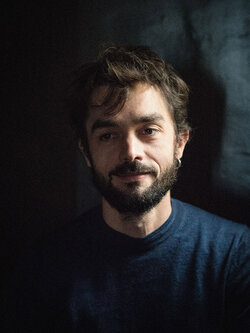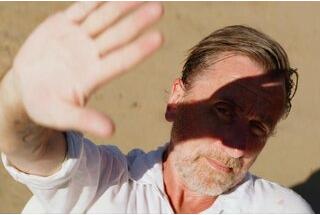On the necessity of the gaze of the other
Interview with cinematographer Jonathan Ricquebourg, AFC, about his work on Pierre Trividic and Patrick Mario Bernard’s film “L’Angle mort”L’Angle Mort brings together a number of narrative issues - political, romantic, fantastic - to tell the story of an invisible man who is losing his power. It’s ambition is to ask the philosophical question about the necessity of the gaze of the other for a character to exist and to be reborn to himself. (BB)
Featuring Jean-Christophe Folly, Isabelle Carré, Golshifteh Farahani.
Release on 19 October 2019

This project took some time to come together, but in the end it was so that the actor could reach the age of his character !
Jonathan Ricquebourg : Oh yes ! This project took ten years to come together after its first draft was completed because the directors refused to shoot it “on the cheap”. Jean-Christophe Folly was in mind for the role, but he was too young. Then, when shooting began, he had reached the correct age and he was cast in the role of the main character, Dominick.
How did you conceptualize the image of this film, given that it cannot be classified in any single genre ?
JR : L’Angle mort goes with no transition from a political film to a soap opera, from a B-series film to a fantasy. I had to encapsulate all of these various readings of the film and reflect them in the image. In a word, it is a romantic film.
How can you create the image of a film with all of these dimensions, going from refined banter to the fantastic ? The directors wanted a classic image, which would be identifiable with the romantic genre, with everything that that entails. I tried to create a beautiful image, but not in the way that one might expect, meaning that I hope that the beauty of the image is found is the meeting between what happens and how it happens. The image had to be moderate, but all the while keeping in mind the words of Pierre and Patrick : “A sticky, beautiful, strange image.”
The film tells the story of the character’s evolution. Did you have to artistically translate that via the image ?
JR : This is the story of a “true” disappearance/demise that ends up in a form of rebirth. The start of the film is contrasted, brilliant, colourful. The camera angles are dynamic and the camera was carried on the shoulder. Then, we had to go towards a sort of reduction, so that by the end, it would be softer and more delicate. We end up with a more monochromatic image, the end of the film takes place in snow, and the image is tone-on-tone, with lots of whites and greys.
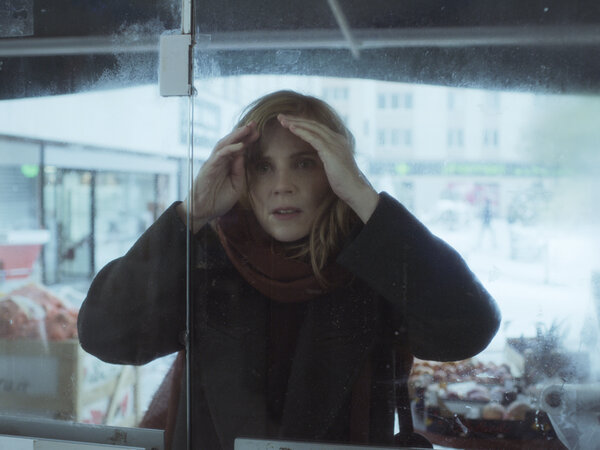
The film begins in the 1980s and ends in 2020, but there are flashbacks. Because I wanted to maintain unity throughout the film, they are visually the same as the scenes from the present.
How did you make Dominick’s invisibility possible ?
JR : Pierre and Patrick had decided that Dominick would always be visible on screen. We are seeing things from his point of view, so he is nude on screen. Then we had to decide about the shadows : would the light project a shadow on him ? If we eliminated the shadows on him, he was very “flat” so we decided it would be better to keep them and just have his reflection disappear. Whenever he is in front of a mirror, the viewer can see that his reflection does not exist.
Then, we had to decide about the gaze and we played with “real” jump cuts : when you’re in his point of view, you see him ; when it’s some other character’s point of view, you don’t see him. Within the sequences, you see him and you don’t see him. That creates the effect of a fantasy film without artifice, something rather pure but whose result has a very well-carried-out oppressive dimension.
The work around colour and the associations between characters and sets was very important. Why ?
JR : Dominick had to dissolve into space. For example, he had to approximate the colour of the walls of his apartment. The directors had mentioned the work of Spanish painter Zurbaran and his tone-on-tone paintings, which are relatively desaturated.
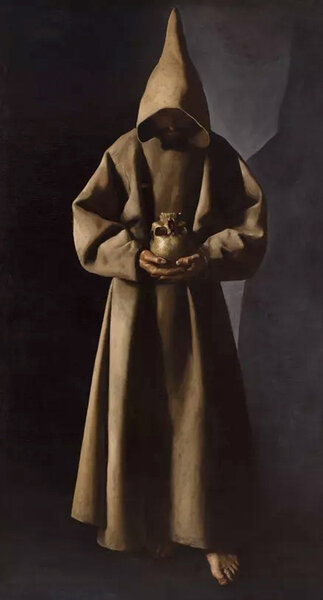
I essentially worked with indirect lighting, which would bounce off of several places before touching the character. Because Jean-Christophe Folly is black and Isabelle Carré is very white, I could use a reflector for each of them, so that I could obtain very matte light textures that were very soft on them and that melted away into the set. And I must say that when I think about the way I lit Jean-Christophe, I realize that I was sick of seeing black-skinned characters lit against the light to make their skin shine. I wanted softer and more frontal lighting.
The film’s format is unusual. What motivated that choice ?
JR : The second visual reference for the film are David Hilliard’s photographs. His works are often diptychs or triptychs, with a “box” effect. In the box, you can imagine a little theatre of marionettes representing the human being, people, and the gaze brought to bear on them.
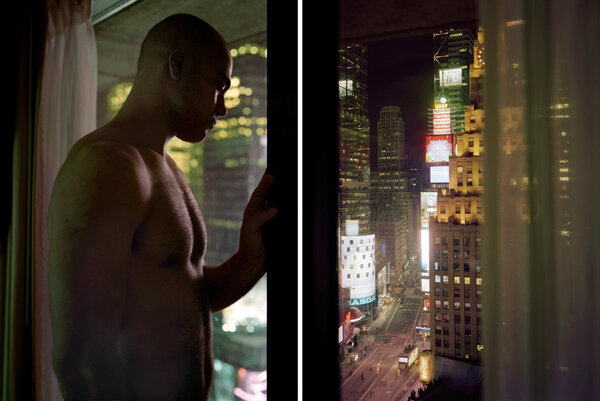
For L’Angle mort, we wanted a more photographic relationship to the composition of the image, with a lot of attention paid to the blur-sharp relationships within the frame. There are a number of times within the film where the focus is on the background, and not on the characters. This oriented us to the 4:3 aspect, which makes the composition of the bodies seem self-evident. This aspect is often seen as a type of affirmation : it’s either very fashionable or very old-fashioned. On the contrary, we didn’t want it to be noticeable.
For example, in the night scenes, darkness absorbs the edges of the frame and the 4:3 is effaced, and so the viewer forgets how closed off this aspect can feel. We shot a lot with 25mm and 40mm film, so that we could remain near the characters and so that the photographic feel would take shape with the short focal-length lenses.
There are different registers of image, evolving textures, and diffusions in this film. Can you tell us about the equipment you used and your reasons for making those choices ?
JR : Each decision was carefully considered and nothing was by chance. For example, the floodlights on Dominick, to create the image of a superhero, are always reasoned. When he can’t become visible anymore, he gets dressed and goes out into the city to try and be seen ; that’s the climax of the film, he becomes the fallen superhero, and the effects become stronger. There are indeed different registers of image, cellphone images, images shot with a DV for the images in the phones. A couple of shots “stolen” with an Alpha 7S Lumix in the metro.
We shot with the RED because I felt it provided more nuance on black skin. I compensated for its hardness by using filters and diffusing light on set, and with smoke. And that helped me to be able to play around with different levels of softeness and hardness, even in postproduction. The city looked very “sharp” so that it would be very present. And also, because invisibility meant being as close as possible to what Dominick felt : feeling his skin, the coldness of the walls, the wind in the trees, his wet feet on the concrete of the city, the pulp of his fingers. The solitude of big cities.
What was your greatest pleasure while shooting this film ?
JR : Let’s put the question in the plural !
The subject matter : this is a film about being recognized in the gaze of the other, and ultimately this invisibility applies to everyone. I liked being able to follow this question throughout the process of making this film.
The emotion in this film : for a cinematographer, it’s really a gift to be able to make an invisible man visible, especially when this visibility occurs through love and the feeling of being loved for what one is. Here, too, I liked being able to follow that trajectory throughout this film.
The meaning of my involvement with this film was first and foremost what it meant to work with two fascinating directors, who truly have a troupe mindset. They stayed faithful to the technicians they’d chosen two years beforehand, even though it meant waiting for them. And they are very involved ; Pierre arrives in the morning with floor blocking, and Patrick with a story-board or a drawing. They are demanding, inventive, and that’s so stimulating for a cinematographer !
(Interview conducted by Brigitte Barbier for the AFC, and translated from French by Alaxander Baron-Raiffe)
 En
En Fr
Fr
